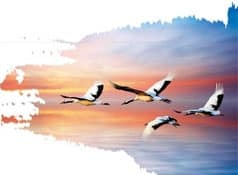How to Make a Hydraulic Press at Home
time:2023-10-30 views:(点击 973 次)
Hydraulic presses can be used for various metal shaping and deforming operations, providing immense force application while offering both customization and flexibility.
Have you seen videos of hydraulic presses crushing things such as bowling balls and soda cans on YouTube and social media channels? This can be an exciting way of applying pressure without spending much money.
Getting Started
Hydraulic presses are powerful machines used in various manufacturing applications. Common uses include punching, crimping, drawing, stamping, trimming, molding, sizing and flattening materials like metals, plastics and glass. Hydraulic presses work by using fluid pressure generated from a pump to press a steel cylinder against material at a set force.
Your choice of hydraulic press depends entirely upon your application needs. There is an assortment of sizes and configurations available that are designed specifically to address forging, clinching, molding and deep drawing tasks - for instance depending on whether you need it for producing molds or sizing sheets of metal.
Hydraulic presses offer many advantages over mechanical presses, including cost-efficiency and precise control. Furthermore, hydraulic systems feature quiet operation while being more durable than their mechanical counterparts and offering greater overload protection.
While an industrial sized hydraulic press can be expensive and require extensive training to operate safely, you can create your own at home using a 5 ton bottle jack--similar to what would be used when changing a car tire--with very minimal expense and effort. Just remember that hydraulic presses produce tremendous force which could quickly crush objects. To reduce injury risks while operating your press safely a blast shield and safety glasses should always be worn during operation of your press.
If this is your first experience working with a hydraulic press, it is strongly suggested that you undergo basic training and practice on scrap metal before beginning any real projects. With YouTube videos showing people using hydraulic presses to dismantle everyday household items using them as destructive machines, it can be easy to be overwhelmed by its power. Wear safety goggles when operating the ram when moving down into the platen.
Hydraulic presses offer an advantage when used in compaction processes, bulge forming or impression forming applications: their dwell capability allows them to achieve and sustain target forces over an extended period. This capability can help users meet compaction goals more reliably while creating desired forces at specific moments for greater impact. This feature is particularly valuable when used for compaction processes such as compaction processes, bulge forming or impression forming applications.
Materials
Hydraulic presses are powerful machines that use liquid pressure to generate compressive force, much like its mechanical equivalent a lever would. First created in 1795 by Joseph Bramah from England, hydraulic presses provide powerful compression forces and are often used in metalworking or other industries for coining, crimping, bending, punching and trimming applications; most frequently though they're employed to form metal into different shapes and forms.
H-frame models of hydraulic presses are an increasingly popular option, featuring two sealed cylinders connected by pistons and filled either with air or oil for use as hydraulic fluid. The larger cylinder often holds the ram and anvil while its counterpart contains the plunger. Both cylinders can then be connected to a pump which allows users to control how much pressure is applied by this press.
Hydraulic presses differ from other machinery in that they contain only minimal moving parts and require minimum maintenance - this makes them an excellent option for manufacturing, construction and industrial applications.
Hydraulic presses range in size from small bottle jacks up to industrial units. To build one, start by cutting pieces of metal that you will use as its frame; drill holes in them that will accept threaded stock; cut threaded stock pieces equal in length to the height of the hydraulic ram when fully extended; and finally create the hydraulic press itself!
Assemble your hydraulic press by connecting its ram to each piece of threaded stock using nuts and washers. Secure each threaded stock to its metal piece by tightening a nut/washer combination; when finished you should have an assembled hydraulic press that can be used for various projects like forming metal, powdered metal forming, pressing bearings onto shafts or even creating swords! As long as you follow safety/compliance regulations set by Occupational Safety and Health Administration (OSHA) and American National Standards Institute (ANSI), operating it should pose no problems whatsoever!
Design
Hydraulic presses generate enormous force, which make them useful in many different tasks. Furthermore, these machines are known for being durable and reliable with few breakdowns requiring major maintenance or repairs over their lifespan. But in order to find the ideal model for you it is crucial that you understand their workings so as to select an ideal model.
Pascal's Law provides the fundamental basis of hydraulic presses, which states that any force applied to any area of confined liquid will be transmitted equally in all directions. In practice, this means that an exerted small mechanical force on a piston with smaller cross-sectional area will create greater force when applied at equal pressure to much larger piston with equivalent surface area - giving rise to a powerful machine capable of crushing cars or molding metal objects among many other tasks.
Hydraulic presses can be tailored to your precise requirements and situation with various sizes and types available to suit them. An arbor press provides great portability in small spaces while its detachable cylinder allows it to be attached to most surfaces - perfect for tasks requiring low amounts of pressure but may not be suitable for high force activities like deep drawing or stamping.
Roll frame presses offer greater versatility compared to H-frame presses, thanks to their long bolster that can accommodate large materials while offering precision. Depending on your work needs, other features may also be specified such as distance-reversal switches for stopping and starting press rams as well as dwell timers that allow you to set how long press rams remain in contact with material.
Hydraulic presses can be utilized for numerous uses, including pressing powder mixtures into pellets for X-ray fluorescence (XRF) analysis. By compressing powdered samples with a hydraulic press, their volume can be reduced, making analysis simpler while decreasing contamination or errors. Furthermore, this method of sample preparation is cheaper than others such as mechanical crushing or sifting and can produce large volumes in short amounts of time.
Build
Hydraulic presses are machines that generate compressive force. They can be used for forging, clinching, moulding, punching, deep drawing and metal forming operations. Their main advantage over mechanical counterparts is their ability to reach full tonnage throughout each stroke - which allows maximum customization and flexibility - plus they have smaller cylinders so require less space.
To build a hydraulic press at home, you require some basic tools and materials. Aside from the hydraulic cylinder itself, these include pumps, motors, base frames and various parts. First you should prepare the base frame by cutting and shaping it, as well as mountings for both motors. Finally you must assemble and shape pieces of metal into pieces that form the main press arm.
Attention should be paid to the connections of any hydraulic cylinder you purchase or build. Welds may be better, but bolted connections will suffice - this will ensure that it does not become damaged when in use.
An integral component of any hydraulic system is an oil tank, which stores hydraulic fluid. To keep oil leakage to a minimum when not being used by hydraulic cylinders, an oil tank should include a valve with which you can close when not needed and a pressure gauge to allow users to monitor how much oil is present in their system.
As part of your home hydraulic press build, it is vital that you consider potential safety risks. Protective equipment like goggles and blast shields must be worn when pressing objects through the hydraulic press as some items could shatter under high-pressure conditions.
Homemade hydraulic presses can make an excellent addition to any garage or workshop. Not only can they help crush objects, straighten pipes and make silenced blocks; but with so many DIY plans out there it could even save money by building it yourself at home at a fraction of the cost!
Link to this article: https://www.ihydraulicpress.com/nsn/5185.html
Hot Articles
-
How Can Make a Small Hydraulic Hot Press?
Hydraulic presses use fluid pressure to compress, assemble, punch, trim, stamp, and stretch materials – offering limitless engineering possibi……
-
How to Make a Hydraulic Press Brake
Employing mechanical forces to bend and shape sheet metal can be challenging. Press brakes are machines which use pressure and clamp dies to bend sh……
-
How to Make a 20 Ton Hydraulic Press
If you’re heavily engaged in metalwork projects like welding, having a hydraulic shop press on hand is invaluable. These presses are used fo……
-
What Can Withstand a Hydraulic Press?
The hydraulic press is a powerful machine that can be used for many different purposes. They’re often used to crush unusual objects, but do they act……
-
How to Make Hydraulic Press Machine PDF
Hydraulic presses use a system of cylinders to generate force, including the master cylinder, pistons and hydraulic pipes. There are different siz……
-
How to Make a Powerful Hydraulic Press
Hydraulic presses are powerful machines capable of crushing anything they hit with enough force, working according to Pascal’s law, which stat……
-
How Much Force Can a Hydraulic Press Produce?
If you want to apply a lot of force, place the piston of a small cylinder close to what needs pressing; this allows liquid pressure to build quick……
-
How to Make a Hydraulic Press Juicer
Hydraulic cold press juicers are popular with wellness enthusiasts because they produce higher juice yields with no heat involved and keep more nutr……
Latest News
-
How to Make a Hydraulic Press With Syringes and Tubing
Hydraulic presses are essential tools in any workshop, as their strength remains consistent all through its stroke. Furthermore, these hydraulic p……
-
How to Make a Hydraulic Press
Hydraulic presses find applications across multiple industries. Junkyards use them to crush cars, fabricators employ them for bending and pressing……
-
How to Make a Hydraulic Shop Press
No matter if it be metalwork or woodworking, a hydraulic shop press is an indispensable tool for projects requiring significant force. Used to ben……
-
How to Make Small Hydraulic Press at Home
Whether it be for strengthening concrete products or simply packing cardboard more compactly, a hydraulic press can be an ideal tool. However, in or……
-
Can You Make a Manual Press Into a Hydraulic Press?
A hydraulic press is a machine that employs Pascal’s Law to magnify force applied on fluid within an enclosure. It consists of a metal frame……
-
How to Make a Hydraulic Press at Home
For workshops that need to apply huge pressure, hydraulic presses are indispensable tools. Instead of spending the money to purchase one commerciall……
-
What Can Withstand a Hydraulic Press?
The hydraulic press is a powerful machine that can be used for many different purposes. They’re often used to crush unusual objects, but do they act……
-
How to Make a Hydraulic Press
Hydraulic presses work on Pascal’s law, which states that pressure exerted on confined fluid is transmitted uninterrupted through its system. ……














































